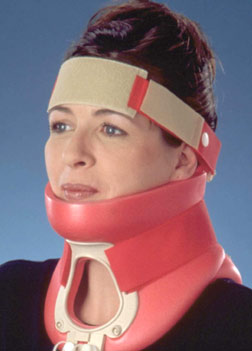We know kite leashes are important, it shouldn't be necessary to rehash that at this point for most of us. Years back we used to argue about this amazingly enough. Suicide leashes have a strong following, despite what the name implies. I don't know how common this is at other areas but around here I see guys heading out at times with their suicide leash coiled on the harness "Wonder Woman" style but not connected to anything. This means your kite is unleashed.
Unleashed kites can do some serious harm. I was told a story recently about just that sort of accident. Many of the details prior to the lofting were only seen by the victim whose observations appear below. Others saw events following the lofting.
Guys were out in a squall among numerous other squalls, first mistake but others followed. This was in Miami during Tropical Storm Fay shortly before the rider in Ft. Lauderdale was hurt. More about that at
http://fksa.org/showthread.php?t=7046 . A kiter was heading back offshore when he noticed a guy launched a jump in his direction. The outbound kiter stopped and brought his kite to the zenith to try to avoid hitting the guy jumping. The jumping kiter landed and was hit by a particularly strong squall gust. He may have been knocked over or simply had the bar ripped from his hands, he was unhooked and was wearing his leash "Wonder Woman" style. That is for looks only and not attached to anything. The guy sitting with his kite at the zenith about 30 ft. offshore suddenly had a second kite bar wrap his lines resulting in TWO looping out of control kites. He was lofted out of the water and about 40 to 60 ft. inland. He smashed hard on his side against the sand fracturing his C2 (hangman's fracture) and C3 vertabrae. The kiter managed to activate his primary QR at this point amazingly enough. He was still pulled by the looping kite so another kiter tried to hold him in place while a third guy ran up and opened his secondary quick release defusing the situation.
The helping kiteboarders DID A VERY IMPORTANT THING by working to keep the injured kiter immobile. This act likely saved the kiteboarder from serious paralysis perhaps for life. There have been other injured kiters who were not so lucky as to have people there to try to keep them immobile. He was very fortunate that his C2 fracture wasn't more severe. That is the vertabrae and related nerve network they try to break with a hang man's noose causing loss of life through asphyxia.

He has been in a Halo Vest (head restraint collar) for seven weeks and may need to have it on for 8 to 12 weeks total. You sleep, badly, sitting up with these things on. The kiteboarder has no medical insurance and has ripped through his savings, taken out cash advances to the maximum on his credit cards, had to sell his car and has been out of work for 7 weeks. The kiter shouldn't have been out in the squall but he didn't deserve to be taken out by someone else's kite and physically and financially messed up like this.
Another accident with similarities claimed the life of Silke Gorldt in 2002 at a Pro competition. That is a runaway kite with no leash. Also she had no Quick Release, few did in those days.
Lessons Learned:
1. Stay out of squalls, always.
2. Always use a well tested kite leash. By not using a kite leash you are putting yourself at risk most of all compelling you to hang on to your kite in extremes. Then there are all those potential victims downwind. If you see a "Wonder Woman" wannabe, talk with them tactfully and effectively, OK?
3. Never put others at risk with your jumps. Always allow a safe downwind buffer with jumps and riding in general.
4. Practice hitting your Quick Release physically and mentally regularly as seconds can count.
5. Wear reasonable safety gear.
6. If you kiterboard, have adequate medical insurance.
7. If you see someone with potential neck trauma try to keep them calm and immobile. More comments about this under "Head Injury" at:
http://fksa.org/showthread.php?t=6998